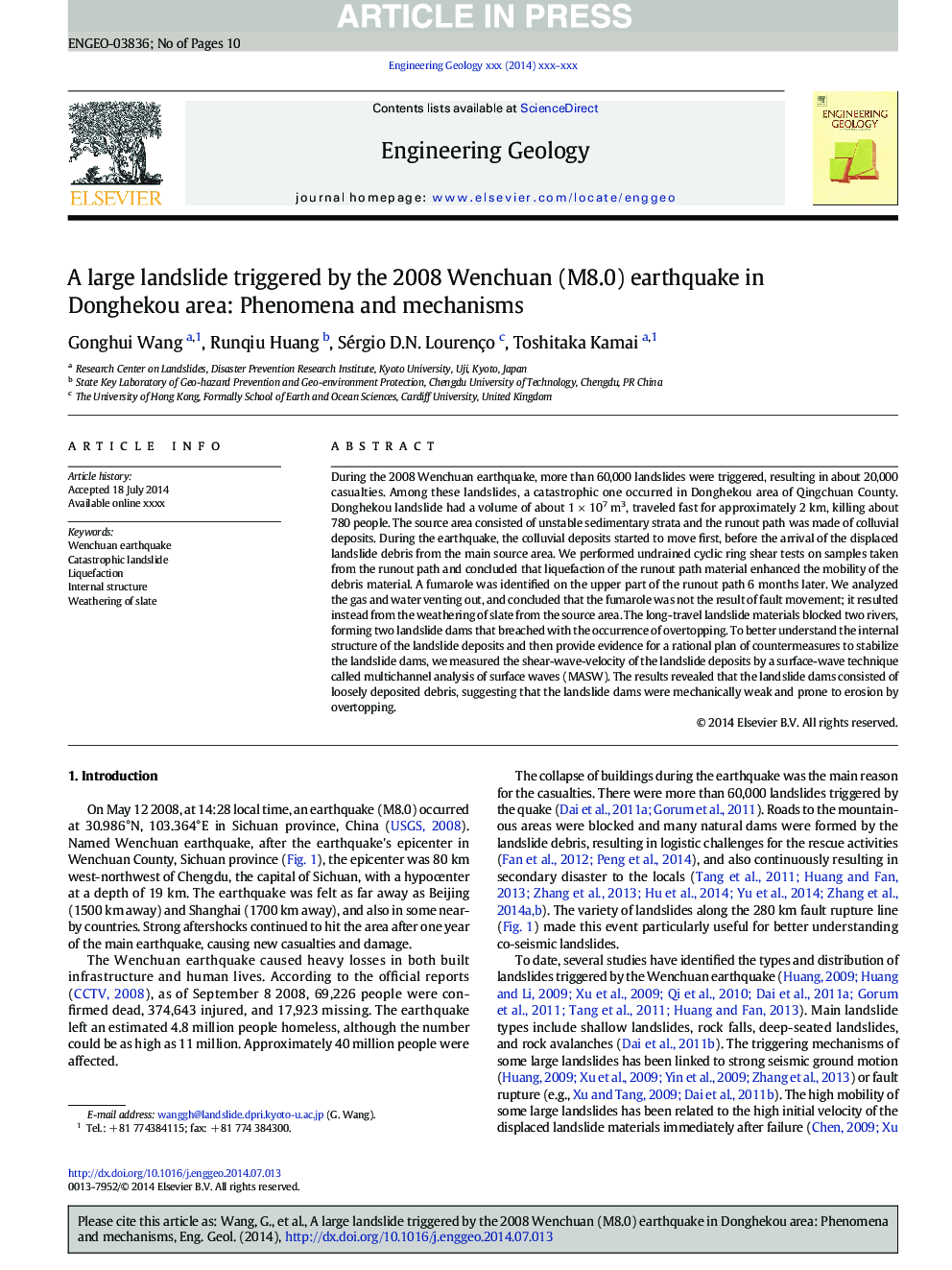| کد مقاله | کد نشریه | سال انتشار | مقاله انگلیسی | نسخه تمام متن |
|---|---|---|---|---|
| 6447850 | 1359306 | 2014 | 10 صفحه PDF | دانلود رایگان |
عنوان انگلیسی مقاله ISI
A large landslide triggered by the 2008 Wenchuan (M8.0) earthquake in Donghekou area: Phenomena and mechanisms
دانلود مقاله + سفارش ترجمه
دانلود مقاله ISI انگلیسی
رایگان برای ایرانیان
کلمات کلیدی
موضوعات مرتبط
مهندسی و علوم پایه
علوم زمین و سیارات
مهندسی ژئوتکنیک و زمین شناسی مهندسی
پیش نمایش صفحه اول مقاله

چکیده انگلیسی
During the 2008 Wenchuan earthquake, more than 60,000 landslides were triggered, resulting in about 20,000 casualties. Among these landslides, a catastrophic one occurred in Donghekou area of Qingchuan County. Donghekou landslide had a volume of about 1Â ÃÂ 107Â m3, traveled fast for approximately 2Â km, killing about 780 people. The source area consisted of unstable sedimentary strata and the runout path was made of colluvial deposits. During the earthquake, the colluvial deposits started to move first, before the arrival of the displaced landslide debris from the main source area. We performed undrained cyclic ring shear tests on samples taken from the runout path and concluded that liquefaction of the runout path material enhanced the mobility of the debris material. A fumarole was identified on the upper part of the runout path 6Â months later. We analyzed the gas and water venting out, and concluded that the fumarole was not the result of fault movement; it resulted instead from the weathering of slate from the source area. The long-travel landslide materials blocked two rivers, forming two landslide dams that breached with the occurrence of overtopping. To better understand the internal structure of the landslide deposits and then provide evidence for a rational plan of countermeasures to stabilize the landslide dams, we measured the shear-wave-velocity of the landslide deposits by a surface-wave technique called multichannel analysis of surface waves (MASW). The results revealed that the landslide dams consisted of loosely deposited debris, suggesting that the landslide dams were mechanically weak and prone to erosion by overtopping.
ناشر
Database: Elsevier - ScienceDirect (ساینس دایرکت)
Journal: Engineering Geology - Volume 182, Part B, 19 November 2014, Pages 148-157
Journal: Engineering Geology - Volume 182, Part B, 19 November 2014, Pages 148-157
نویسندگان
Gonghui Wang, Runqiu Huang, Sérgio D.N. Lourenço, Toshitaka Kamai,